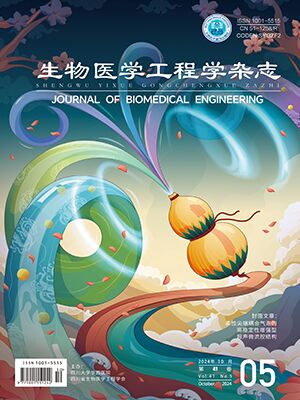| 1. |
Ojaghihaghighi S, Vahdati S S, Mikaeilpour A, et al. Comparison of neurological clinical manifestation in patients with hemorrhagic and ischemic stroke. World J Emerg Med, 2017, 8(1): 34-38.
|
| 2. |
Kanazawa M, Takahashi T, Ishikawa M, et al. Angiogenesis in the ischemic core: a potential treatment target?. J Cereb Blood Flow Metab, 2019, 39(5): 753-769.
|
| 3. |
Hansson G K. Inflammation, atherosclerosis, and coronary artery disease. N Engl J Med, 2005, 352(16): 1685-1695.
|
| 4. |
Xiong X, White R E, Xu L, et al. Mitigation of murine focal cerebral ischemia by the hypocretin/orexin system is associated with reduced inflammation. Stroke, 2013, 44(3): 764-770.
|
| 5. |
Qiu J. Traditional medicine: a culture in the balance. Nature, 2007, 448(7150): 126-129.
|
| 6. |
Libby P, Ridker P M, Hansson G K, et al. Inflammation in atherosclerosis: from pathophysiology to practice. J Am Coll Cardiol, 2009, 54(23): 2129-2138.
|
| 7. |
寿斌耀, 陈兰英, 张妮, 等. 降香不同提取物通过调控能量代谢抑制大鼠急性心肌缺血损伤. 中成药, 2021, 43(2): 374-380.
|
| 8. |
谢丽华, 赵毅锦, 林兴丽, 等. 中药治疗脑缺血的用药规律研究. 中医药导报, 2017, 23(17): 38-40.
|
| 9. |
Wang S, Luo K, Liang J, et al. Metabolomics study on the synergistic interaction between Salvia miltiorrhiza and Lignum dalbergiae odoriferae used as 'J un-Shi' herbs in a S. miltiorrhiza recipe. Med Res Rev, 2011, 20(1): 16-22.
|
| 10. |
Zheng X, Zhao X, Wang S, et al. Co-administration of Dalbergia odorifera increased bioavailability of Salvia miltiorrhizae in rabbits. Am J Chin Med, 2007, 35(5): 831-840.
|
| 11. |
李斐, 孟运莲. 香丹注射液对大鼠脑缺血再灌注损伤的保护作用. 中国现代药物应用, 2010, 4(1): 25-27.
|
| 12. |
李斐, 张岳. 香丹注射液对脑缺血再灌注大鼠细胞凋亡与FADD mRNA表达的影响. 中国老年学杂志, 2013, 33(16): 3899-3900.
|
| 13. |
Ru J, Li P, Wang J, et al. TCMSP: a database of systems pharmacology for drug discovery from herbal medicines. J Cheminform, 2014, 6: 1-6.
|
| 14. |
Kim S, Chen J, Cheng T, et al. PubChem in 2021: new data content and improved web interfaces. Nucleic Acids Res, 2021, 49(1): 1388-1395.
|
| 15. |
Consortium T U. UniProt: the universal protein knowledgebase in 2021. Nucleic Acids Res, 2021, 49(1): 480-489.
|
| 16. |
Stelzer G, Rosen N, Plaschkes I, et al. The GeneCards suite: from gene data mining to disease genome sequence analyses. Curr Protoc Bioinformatics, 2016, 54(1): 1-33.
|
| 17. |
Amberger J S, Bocchini C A, Scott A F, et al. OMIM.org: leveraging knowledge across phenotype–gene relationships. Nucleic Acids Res, 2019, 47(1): 1038-1043.
|
| 18. |
Zhou Y, Zhang Y, Lian X, et al. Therapeutic target database update 2022: facilitating drug discovery with enriched comparative data of targeted agents. Nucleic Acids Res, 2022, 50(1): 1398-1407.
|
| 19. |
Szklarczyk D, Gable A L, Nastou K C, et al. The STRING database in 2021: customizable protein–protein networks, and functional characterization of user-uploaded gene/measurement sets. Nucleic Acids Res, 2021, 49(1): 605-612.
|
| 20. |
Wu Y, Zhang F, Yang K, et al. SymMap: an integrative database of traditional Chinese medicine enhanced by symptom mapping. Nucleic Acids Res, 2019, 47(1): 1110-1117.
|
| 21. |
Sherman B T, Hao M, Qiu J, et al. DAVID: a web server for functional enrichment analysis and functional annotation of gene lists (2021 update). Nucleic Acids Res, 2022, 50(1): 216-221.
|
| 22. |
Hers I, Vincent E E, Tavaré J M. Akt signalling in health and disease. Cell Signal, 2011, 23(10): 1515-1527.
|
| 23. |
Boldin M P, Goncharov T M, Goltseve Y V, et al Involvement of MACH, a novel MORT1/FADD-interacting protease, in Fas/APO-1-and TNF receptor–induced cell death. Cell, 1996, 85(6): 803-815.
|
| 24. |
Lalaoui N, Boyden S E, Oda HM, et al. Mutations that prevent caspase cleavage of RIPK1 cause autoinflammatory disease. Nature, 2020, 577(7788): 103-108.
|
| 25. |
Owaki H, Makar R, Boulton T G, et al. Extracellular signal-regulated kinases in T cells: characterization of human ERK1 and ERK2 cDNAs. Biochem Biophys Res Commun, 1992, 182(3): 1416-1422.
|
| 26. |
Beinke S, Robinson M J, Hugunin M, et al. Lipopolysaccharide activation of the TPL-2/MEK/extracellular signal-regulated kinase mitogen-activated protein kinase cascade is regulated by IkappaB kinase-induced proteolysis of NF-kappaB1 p105. Mol Cell Biol, 2004, 24(21): 9658-9667.
|
| 27. |
Yokoyama C, Tanabe T. Cloning of human gene encoding prostaglandin endoperoxide synthase and primary structure of the enzyme. Biochem Biophys Res Commun, 1989, 165(2): 888-894.
|
| 28. |
Gellens M E, George Jr A L, Chen L, et al. Primary structure and functional expression of the human cardiac tetrodotoxin-insensitive voltage-dependent sodium channel. Proc Natl Acad Sci U S A, 1992, 89(2): 554-558.
|
| 29. |
Lee D, Lin T, Lee C, et al. MicroRNA-10a is crucial for endothelial response to different flow patterns via interaction of retinoid acid receptors and histone deacetylases. Proc Natl Acad Sci U S A, 2017, 114(8): 2072-2077.
|
| 30. |
Chung F Z, Wang C D, Potter P C, et al. Site-directed mutagenesis and continuous expression of human b-adrenergic receptors. Identification of a conserved aspartate residue involved in agonist binding and receptor activation. J Biol Chem, 1988, 263(9): 4052-4055.
|
| 31. |
Sugimoto M, Ko R, Goshima H, et al. Formononetin attenuates H2O2-induced cell death through decreasing ROS level by PI3K/Akt-Nrf2-activated antioxidant gene expression and suppressing MAPK-regulated apoptosis in neuronal SH-SY5Y cell. Neurotoxicology, 2021, 85: 186-200.
|
| 32. |
Mao Y, Qu Y, Wang Q. Cryptotanshinone reduces neurotoxicity induced by cerebral ischemia-reperfusion injury involving modulation of microglial polarization. Restor Neurol Neurosci, 2021, 39(3): 209-220.
|
| 33. |
马建福, 王豆, 李涛, 等. 郁金治疗卒中后抑郁的药理机制研究进展. 中国实验方剂学杂志, 2022, 28(7): 276-282.
|




